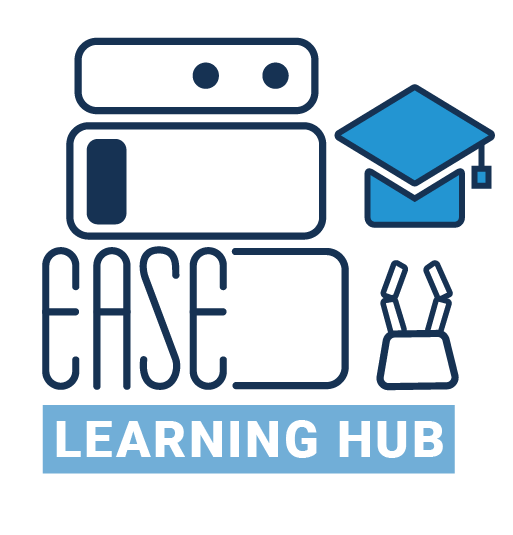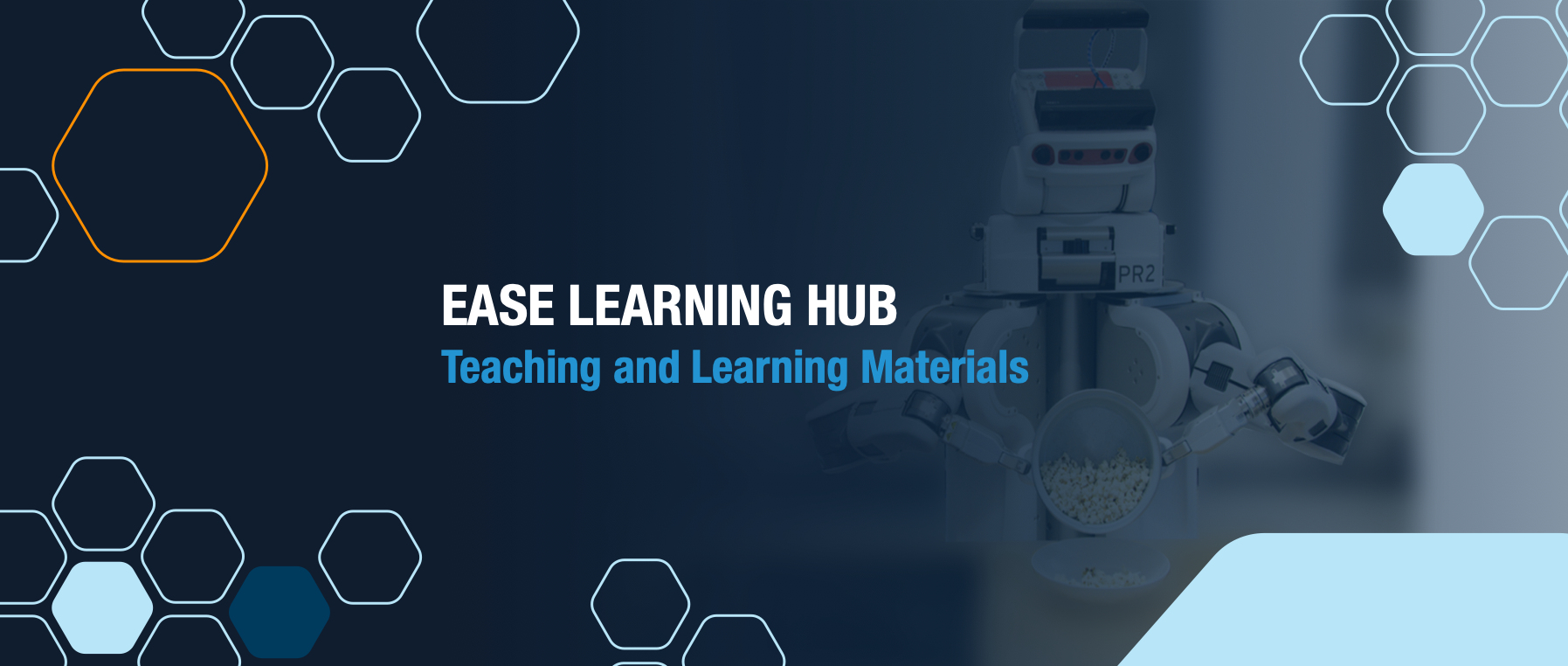Moritz Tenorth, CTO at the start-up Magazino GmbH, talks about mobile pick-and-place robots in industrial working environments. Magazino develops and builds customized industrial robots and robot platforms mainly used in logistics that serve as robot assistants to humans, for example to factory workers to keep their work environment safe and efficient. Moritz Tenorth gives us an idea of how challenging these tasks are and how they can be solved. He also shares his advice for a successful transition from academia to industry and the work in a real startup environment. Follow his vivid lecture that is also suitable for beginners.
PhD-Students
Lectures
Part 2: In his follow-up lecture, Michael Beetz gives a short recap of his first talk before further exploring knowledge representation and reasoning for robotic agents. He focuses on one of the main problems of human-scale manipulation tasks for robotic systems, action description, when it comes to the performance of abstract tasks like "pour the water out". From "grasp the pot by the handles" to "tilt the pot around the axis between the handles" to "hold the lid while pouring", every action includes multiple intermediate tasks that have to be described in detail for the robot. Follow his comprehensive lecture that covers many aspects of cognition-enabled robotics.
Part 3: In his third and final lecture, David Vernon discusses recent developments in cognition research. He addresses the common model of cognition that emcompasses approaches in Artificial Intelligence, Cognitive Science, Neuroscience, and Robotics. It is mainly based on the book "Unified theories of cognition" by Allen Newell, a leading investigator in computer science and cognitive psychology. Newell states that cognition takes place over multiple timescales (from millisecond-level to year-level and everything in between). Follow David Vernon's gripping lecture that is also suitable for beginners.
Probabilistic robotics is a relatively new area of robotics and concerned with robot perception and robot manipulation in the face of uncertainty and incomplete knowledge about the world. In his thorough and concise talk, Daniel Nyga introduces the basics of probability theory. He further shows probabilistic graphical models, including Bayesian networks and Markov Random Fields, explores statistical relational learning using Markov logic networks, and concludes with probabilistic natural language understanding.
In their lecture, Jürgen Sturm and Christoph Schütte from Google Germany talk about the Google’s Cloud Robotics project before diving deeper into specific robot perception problems. Christoph Schütte introduces Cartographer, a system that provides real-time simultaneous localization and mapping, also called SLAM, in 2D and 3D across multiple platforms. Jürgen Sturm closes the lecture with semantic mapping and spatial intelligence in artificial intelligence. In a nutshell, spatial intelligence describes the ability to understand and remember spatial relations among objects or space and allows humans to navigate in their environment and to perform jobs. The same applies to robots and their understanding of their environment. Their educational and application-oriented lecture is suitable for beginners.
Tools and Datasets
The video is a tutorial showing the basics of the CRAM framework, which is a toolbox for designing, implementing, and deploying software on autonomous robots. The aim of the tutorial is to (1) give an intuition of what knowledge the robot needs to execute even a simple fetch and place, (2) show how many different things can go wrong and teach writing simple failure handling strategies, and (3) make the user familiar with the API of the actions already implemented in the CRAM framework.
Bio:
Gayane (shortly Gaya) is a PhD student at the Institute for Artificial Intelligence of the University of Bremen. Her main research interests are concentrated in the area of cognition-enabled robot executives. She is currently actively and passionately involved in the development of CRAM. Before joining Michael Beetz's group in November 2013, she worked for one year as a research assistant at Kastanienbaum GmbH (now Franka Emika) with Sami Haddadin, in tight collaboration with the Robotics and Mechatronics Center of DLR. Before that, she has acquired her M.Sc. degree in Informatics with a major in AI and Robotics at the Technical University of Munich. Before coming to Germany, she had a number of short-term jobs in the fields of iPhone game development and web development. She's got her B.Eng. degree in Informatics with a major in Information Security from the State Engineering University of Armenia.

openEASE is a web-based Knowledge Processing Service for Robots and Robotics/AI Researchers.

pracmln is a toolbox for statistical relational learning and reasoning and as such also includes tools for standard graphical models. pracmln is a statistical relational learning and reasoning system that supports efficient learning and inference in relational domains. pracmln has started as a fork of the ProbCog toolbox and has been extended by latest developments in learning and reasoning by the Institute for Artificial Intelligence at the University of Bremen, Germany.

KnowRob is a knowledge processing system that combines knowledge representation and reasoning methods with techniques for acquiring knowledge and for grounding the knowledge in a physical system and can serve as a common semantic framework for integrating information from different sources. KnowRob combines static encyclopedic knowledge, common-sense knowledge, task descriptions, environment models, object information and information about observed actions that has been acquired from various sources (manually axiomatized, derived from observations, or imported from the web). It supports different deterministic and probabilistic reasoning mechanisms, clustering, classification and segmentation methods, and includes query interfaces as well as visualization tools.

CRAM (Cognitive Robot Abstract Machine) is a software toolbox for the design, the implementation, and the deployment of cognition-enabled autonomous robots performing everyday manipulation activities. CRAM equips autonomous robots with lightweight reasoning mechanisms that can infer control decisions rather than requiring the decisions to be preprogrammed. This way CRAM-programmed autonomous robots are much more flexible, reliable, and general than control programs that lack such cognitive capabilities. CRAM does not require the whole domain to be stated explicitly in an abstract knowledge base. Rather, it grounds symbolic expressions in the knowledge representation into the perception and actuation routines and into the essential data structures of the control programs.

